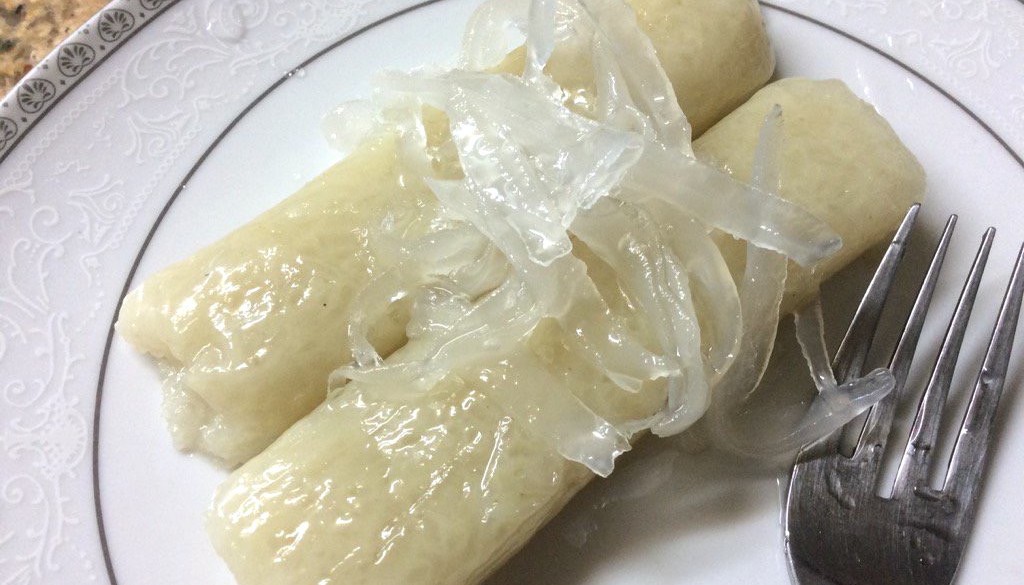Macapuno Strings

Suman Topped With Macapuno Strings By Toyang Noresa
Macapuno strings have also been called “sport strings” because the Philippine Coconut Authority officially refers to macapuno as “coconut sport.”
What is Macapuno?
Jokingly referred to as “mutant coconut” and even “freak coconut,” macapuno is a genetic aberration of the regular coconut tree. The mutation has been further developed by food geneticists (scientists!) because the flesh of the “nut” or “fruit” is thick and has a special flavor.
The inside of a macapuno coconut shell has very little, if any, of the usual clear coconut water / liquid; instead, it oozes a gelatin-like substance. The meat is scraped with a grater that produces long shreds that look like strings.
You know that the macapuno strings were cooked properly and preserved well if the finished product is translucent, not the solid white that they were in their natural state.
Frequently paired with ube, macapuno is a popular flavor for candies, pastries and ice cream. Macapuno strings are used in haluhalo. They are preserved in “bottles” or jars with heavy syrup. Popular brands include Bulacan and Laguna, which are actually names of provinces in the Philippines.
Many manufacturers fake macapuno and use young coconut as a replacement instead.
Bottled macapuno is labelled “Coconut Sport in Syrup” aka “Balles de Coco” in French Canada.

Photo: Shreds of Coconut… Is it real macapuno or simply young coconut being passed off as macapuno? Those who grew up eating macapuno can tell for sure!



That’s a very nice featured photo showcasing the translucence of macapuno strings.